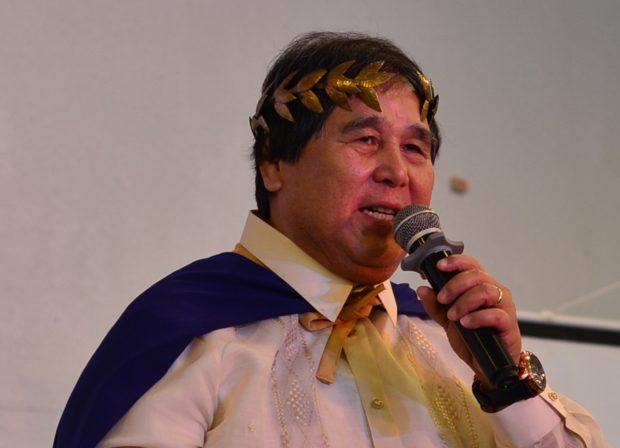CLARK, PAMPANGA — When teens from Pampanga chat or text with friends, they should consider communicating in the vernacular to help keep the Kapampangan language alive.
That’s the advise offered by poet Renato Alzadon, when he joined poets, writers, artists, and even high school students who were gathered by the Pamag-aral king Kultura at Literaturang Kapampangan (PKLK, or the School of Culture and Literature) on Saturday.
Conversations today are couched in Filipino or English, but Alzadon, who began writing poetry at 16, said young folks have so many ways of using Kapampangan.
‘Prolong the life’
“Young people must think of ways to prolong the life of our language. If you are a group, learn Kapampangan poetry. When you text or chat, do so in the Kapampangan language. Do the same when making music,” Alzadon said in Filipino, addressing the crowd.
“We need to be creative about using our language. If you sing well, illustrate well, or dance well, we can incorporate our language. We have nothing to be ashamed of.”
Alzadon was named King of Parnassus in 2009 by then Pampanga Gov. Ed Panlilio to honor his body of work.
Rodolfo “Totoy Bato” Laxamana, renowned for his Kapampangan novelty songs, made the same assertion in the event. He is popular here for composing and performing the ditties “Cuarenta Dias (40 Days),” “Istorya ng Raffy (Story of Raffy), “Lugud na ning Indu (A mother’s love)” and “Pinatubo.”
PKLK also invited Rafael Maniago, a renowned painter and poet; poets Laureate Sergio Calayag and Francisco Guinto; author Rodrigo Sicat and Philip Punsalan, Pampanga’s “Elvis Presley” who performed in the event.
Aspiring artists
The highlights of the event came from the aspiring Kapampangan teen artists. Eight students of the San Roque National High School in Tarlac’s Bamban town recited poems and performed a “Crissotan” (Balagtasan rendered in Kapampangan) entitled “Sanung maulaga king panyulung. Ing amanung Ingles o ing Kapampangan? (What language should be used in the development of Kapampangan literature? English or Kapampangan?).”
Their schoolmates—eight Aeta teens from the Magan tzi tribe in Sitio San Martin—performed a dance called “Taripi,” and were joined by some of the participants.
PKLK plans to have a Crissotan competition for students to promote Kapampangan culture. In Angeles City, the group Paper Soul has been cultivating the skills and talents of spoken word poets who use Kapampangan as their medium. —Maria Adelaida Calayag INQ
